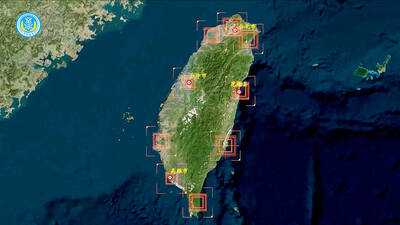At a recent cocktail party, an annual Toys for Tots charity drive that draws a crowd of mostly gay men, the designer Peter Som wryly observed that there were so many designers, retail executives and publicists present that if the pier collapsed, "there would be no fashion industry tomorrow."
Two months earlier, Tara Subkoff, the agent provocateur behind the label Imitation of Christ, had remarked during a public forum, with a great deal of irritation, that fashion "is a gay man's profession."
Subkoff was annoyed; Som was amused.
The difference between their attitudes toward the gay male dominance of the fashion industry, a peculiar and widely acknowledged circumstance, illustrates a growing tension between those who feel they are discriminated against and those who feel somewhat favored by a perception, largely unexamined, that men are better designers than women, and gay men are the best designers of all.
Subkoff's remarks, made during a panel discussion of Generation X Fashion at the New Yorker Festival in late September, landed like an incendiary device in the fashion world -- she also accused Anna Wintour, the editor of Vogue, of supporting only "young, gay men."
A debate has continued ever since on Seventh Avenue in New York over who is most likely to succeed in fashion and also on whether women, who make up most of the customers for this industry, face institutional barriers that limit their advancement on the creative side.
Many female designers perceive that their male counterparts have won more industry honors and are featured more prominently in magazines. On television, they note, advice on style and design is almost invariably sought from a vibrantly gay man -- witness Queer Eye for the Straight Guy, the new Isaac talk show with Isaac Mizrahi on the Style channel and Project Runway on Bravo, which began its second season on Wednesday night. Its cast of 16 includes eight male contestants, seven of them gay, a spokesman for Bravo said.
"A 30-year-old woman who is not very glamorous, but approaching fashion from a different point of view, maybe would not get the same attention as a young, cute and probably gay man," said Liz Collins, a knitwear designer who has earned several industry accolades but little commercial success.
"There are some really deep-seated tensions and resentment that have existed for a long time about gender in fashion and who gets things," Collins said. "A lot of those things are not necessarily real, or true, and they may be just suspicions. But you can look at certain examples of people who have had a faster rise to stardom, and the percentage of gay men is higher."
There is no way to accurately measure the success rate of designers based on sex or sexual orientation, or, somewhat speciously, to examine if men are more talented at design than women. As Valerie Steele, the chief curator of the Museum of the Fashion Institute of Technology, said: "There is no gay gene for creativity."
But circumstantial evidence is making some designers wonder about the disparities. Of the young US designers most embraced by retailers and celebrated in the fashion press in recent years, the roll call is almost exclusively male: Zac Posen, Marc Jacobs, Narciso Rodriguez and Som as well as Jack McCollough and Lazaro Hernandez of Proenza Schouler. Their female contemporaries have had a harder time breaking through, among them Behnaz Sarafpour, Alice Roi and Subkoff.
"Gay men stick together like a band of brothers," Subkoff said in an interview. "It's more common for a man to bring up a younger assistant" who is male "and be proud of that," she added, "whereas a woman would be threatened" to promote another woman.
Who's Who in Fashion, a directory published by Fairchild Publications, is split 60-40 in favor of men, and The Encyclopedia of Clothing and Fashion, published last year by Charles Scribner's Sons, included entries on 36 female and 69 male designers. No doubt such imbalances reflect in part the fact that fashion, like all professions, has historically been dominated by men because women rarely had careers outside the home until contemporary times.
Some of the reasons women don't have greater visibility today, insiders say, come down to the same work-life issues affecting women's progress in fields like law and banking.
"Women still prioritize getting married and having babies," said Norma Kamali, one of the most influential female designers of the past century. "There are fewer women willing to give up the time that is required for this kind of career. It's about passion, about being so focused that nothing could distract you."
"I don't show up in the fashion press a lot," she said. "If you look at who is touted in the fashion press, it is overwhelmingly young gay men."
Wintour declined to comment on Subkoff's accusation that she favors gay men among designers prominently featured in Vogue. But other designers came to her defense, noting the November and December issues show dresses by Vera Wang on the cover. There is little dispute that the designs of John Galliano, Jacobs, Rodriguez, Olivier Theyskens and Karl Lagerfeld, all prominently featured on Vogue covers this year, merit the spotlight.
In some quarters, the perception exists that fashion's main consumers, women, are more comfortable taking advice about how they should look from a man. "Men are often better designers for women than other women," said Tom Ford, the former creative director of Gucci and Yves Saint Laurent, who more than anyone in the past decade built a brand on his own persona, that of a man whose sensual appeal is to both men and women.
Whereas Bill Blass, Valentino and Oscar de la Renta founded their empires on the strength of a nonthreatening, nonsexual charisma, Ford aggressively promoted his sexually charged designs. "Of course there are many more gay male designers," Ford said. "I think we are more objective. We don't come with the baggage of hating certain parts of our bodies."
Some designers embrace an extreme version of this position. Michael Vollbracht, the current designer of Bill Blass, said he believes that gay men are demonstrably superior at design, their aesthetic formed by a perception of a woman as an idealized fantasy. "I come from a time when gay men dressed women," Vollbracht said. "We didn't bed them. Or at least I didn't. I am someone who is really pro-homosexual. I am an elitist. I am better than straight people. Women are confused about who they want to be. I believe that male designers have the fantasy level that women do not."
When women design for other women, Ford said, they proceed from a standpoint of practicality -- not fantasy. "Sometimes women are trapped by their own views of themselves, but some have built careers around that," he said. "Donna Karan was obsessed with her hips and used her own idiosyncrasies to define her brand."
Buchman sees little value in such arguments. If men are more objective, she countered, then women are empathetic, which can be useful in understanding the consumer. "I wear my own clothes," she said. "I have lived the life of my customer."
"This disparity is tied in with a lot of areas, not just fashion, where women have achieved less in the eyes of the world," Buchman said. "It is puzzling and troubling to me as a 1970s feminist but who knows, maybe this generation will be the one to change it all."
Fashion, unlike finance or politics, has always included some women at the top. But their visibility has not increased incrementally over the decades like other professions. In the 1920s and 1930s, there were many female designers -- Alix Gres, Elsa Schiaparelli and Chanel -- but after World War II, the big names were male -- Bill Blass, Yves Saint Laurent and Pierre Cardin. Steele of FIT said the change could be attributed to the evolving role of women in society, from one of strength and independence before the war to the postwar ideal of a feminine mystique.
Likewise, the impression that gay men are more likely to succeed in fashion today, she said, is a reflection of contemporary attitudes and stereotypes.
"There are all of these unexamined and frankly invalid ideas that still seem to be bandied about," Steele said. "I think there are more likely cultural and sociopolitical explanations. But the perception that all good designers are men and that all male designers are gay, which Rudi Gernreich said 30 years ago, all gets down to the totally unprovable to the grossly homophobic."

The People’s Republic of China (PRC) last week offered us a glimpse of the violence it plans against Taiwan, with two days of blockade drills conducted around the nation and live-fire exercises not far away in the East China Sea. The PRC said it had practiced hitting “simulated targets of key ports and energy facilities.” Taiwan confirmed on Thursday that PRC Coast Guard ships were directed by the its Eastern Theater Command, meaning that they are assumed to be military assets in a confrontation. Because of this, the number of assets available to the PRC navy is far, far bigger

The 1990s were a turbulent time for the Chinese Nationalist Party’s (KMT) patronage factions. For a look at how they formed, check out the March 2 “Deep Dives.” In the boom years of the 1980s and 1990s the factions amassed fortunes from corruption, access to the levers of local government and prime access to property. They also moved into industries like construction and the gravel business, devastating river ecosystems while the governments they controlled looked the other way. By this period, the factions had largely carved out geographical feifdoms in the local jurisdictions the national KMT restrained them to. For example,

The remains of this Japanese-era trail designed to protect the camphor industry make for a scenic day-hike, a fascinating overnight hike or a challenging multi-day adventure Maolin District (茂林) in Kaohsiung is well known for beautiful roadside scenery, waterfalls, the annual butterfly migration and indigenous culture. A lesser known but worthwhile destination here lies along the very top of the valley: the Liugui Security Path (六龜警備道). This relic of the Japanese era once isolated the Maolin valley from the outside world but now serves to draw tourists in. The path originally ran for about 50km, but not all of this trail is still easily walkable. The nicest section for a simple day hike is the heavily trafficked southern section above Maolin and Wanshan (萬山) villages. Remains of

With over 100 works on display, this is Louise Bourgeois’ first solo show in Taiwan. Visitors are invited to traverse her world of love and hate, vengeance and acceptance, trauma and reconciliation. Dominating the entrance, the nine-foot-tall Crouching Spider (2003) greets visitors. The creature looms behind the glass facade, symbolic protector and gatekeeper to the intimate journey ahead. Bourgeois, best known for her giant spider sculptures, is one of the most influential artist of the twentieth century. Blending vulnerability and defiance through themes of sexuality, trauma and identity, her work reshaped the landscape of contemporary art with fearless honesty. “People are influenced by